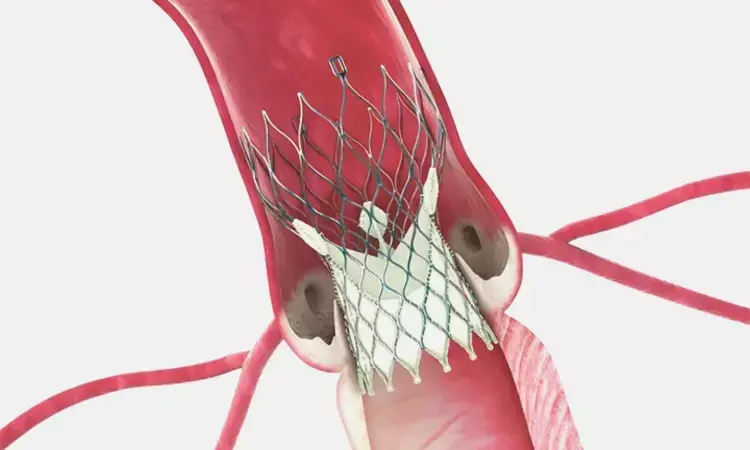- Home
- Medical news & Guidelines
- Anesthesiology
- Cardiology and CTVS
- Critical Care
- Dentistry
- Dermatology
- Diabetes and Endocrinology
- ENT
- Gastroenterology
- Medicine
- Nephrology
- Neurology
- Obstretics-Gynaecology
- Oncology
- Ophthalmology
- Orthopaedics
- Pediatrics-Neonatology
- Psychiatry
- Pulmonology
- Radiology
- Surgery
- Urology
- Laboratory Medicine
- Diet
- Nursing
- Paramedical
- Physiotherapy
- Health news
- Fact Check
- Bone Health Fact Check
- Brain Health Fact Check
- Cancer Related Fact Check
- Child Care Fact Check
- Dental and oral health fact check
- Diabetes and metabolic health fact check
- Diet and Nutrition Fact Check
- Eye and ENT Care Fact Check
- Fitness fact check
- Gut health fact check
- Heart health fact check
- Kidney health fact check
- Medical education fact check
- Men's health fact check
- Respiratory fact check
- Skin and hair care fact check
- Vaccine and Immunization fact check
- Women's health fact check
- AYUSH
- State News
- Andaman and Nicobar Islands
- Andhra Pradesh
- Arunachal Pradesh
- Assam
- Bihar
- Chandigarh
- Chattisgarh
- Dadra and Nagar Haveli
- Daman and Diu
- Delhi
- Goa
- Gujarat
- Haryana
- Himachal Pradesh
- Jammu & Kashmir
- Jharkhand
- Karnataka
- Kerala
- Ladakh
- Lakshadweep
- Madhya Pradesh
- Maharashtra
- Manipur
- Meghalaya
- Mizoram
- Nagaland
- Odisha
- Puducherry
- Punjab
- Rajasthan
- Sikkim
- Tamil Nadu
- Telangana
- Tripura
- Uttar Pradesh
- Uttrakhand
- West Bengal
- Medical Education
- Industry
Early improvement in Ejection fraction post TAVR improves survival in AS patients: JAMA study

In patients with severe aortic stenosis and left ventricular ejection fraction (LVEF) less than 50%, early LVEF improvement after transcatheter aortic valve replacement (TAVR) is associated with improved 1-year mortality; however, its association with long-term clinical outcomes is not known. A recent study by Kolte et al has shown that every 1 in 3 patients experience LVEF improvement within 1 month after TAVR and this early LVEF improvement is translated to lower 5-year all-cause and cardiac death in female subjects.
Prior studies have shown that in patients with severe AS and LV dysfunction (LV ejection fraction [LVEF], <40%-50%), approximately half experience an improvement in LVEF (defined as an increase of ≥10% points) within 30 days after TAVR.
The present study was designed to sought the impact of this early improvement in LV dynamics on long term survival of patients.
This cohort study analyzed patients enrolled in PARTNER 1, 2, and S3 trials and registries. High- and intermediate-risk patients with baseline LVEF less than 50% who underwent transfemoral TAVR were included in the current study. Early LVEF improvement was defined as increase of 10 percentage points or more at 30 days. The main outcome was all-cause death at 5 years.
The study gave following results:
1. Early LVEF improvement was seen in a third of patients.
2. Prior myocardial infarction, diabetes, cancer, higher baseline LVEF, larger left ventricular end-diastolic diameter, and larger aortic valve area were independently associated with lower likelihood of LVEF improvement.
3. Patients with vs without early LVEF improvement after TAVR had lower 5-year all-cause death and cardiac death.
4. In multivariable analyses, early improvement in was associated with lower 5-year all-cause death and cardiac death after TAVR.
5. There were no statistically significant differences in rehospitalization, New York Heart Association functional class, or Kansas City Cardiomyopathy Questionnaire Overall Summary score at 5 years in patients with vs without early LVEF improvement.
6. In subgroup analysis, the association between early LVEF improvement and 5-year all-cause death was consistent regardless of the presence or absence of coronary artery disease or prior myocardial infarction.
7. There was significant interaction by sex such that early LVEF improvement was associated with improved 5-year outcomes in female individuals but not in male individuals
Why there is a gender difference?
"Because LVEF underestimates the degree of LV systolic dysfunction in presence of concentric hypertrophy, which is more prevalent and more pronounced in female vs male individuals, it is possible that post-TAVR, the regression of the concentric hypertrophy may, at least in part, mask the magnitude of improvement in LV systolic function and LVEF such that an improvement of 10% points in LVEF in female individuals may actually represent a more important true improvement in LV systolic function than the same improvement of 10% points in male individuals", note authors in the discussion section.
Further studies are needed to understand the pathophysiologic mechanism(s) mediating reduced mortality in patients with early LVEF recovery after TAVR.
Source: JAMA Cardiology: JAMA Cardiol. Published online July 27, 2022. doi:10.1001/jamacardio.2022.2222
MBBS, MD , DM Cardiology
Dr Abhimanyu Uppal completed his M. B. B. S and M. D. in internal medicine from the SMS Medical College in Jaipur. He got selected for D. M. Cardiology course in the prestigious G. B. Pant Institute, New Delhi in 2017. After completing his D. M. Degree he continues to work as Post DM senior resident in G. B. pant hospital. He is actively involved in various research activities of the department and has assisted and performed a multitude of cardiac procedures under the guidance of esteemed faculty of this Institute. He can be contacted at editorial@medicaldialogues.in.
Dr Kamal Kant Kohli-MBBS, DTCD- a chest specialist with more than 30 years of practice and a flair for writing clinical articles, Dr Kamal Kant Kohli joined Medical Dialogues as a Chief Editor of Medical News. Besides writing articles, as an editor, he proofreads and verifies all the medical content published on Medical Dialogues including those coming from journals, studies,medical conferences,guidelines etc. Email: drkohli@medicaldialogues.in. Contact no. 011-43720751


